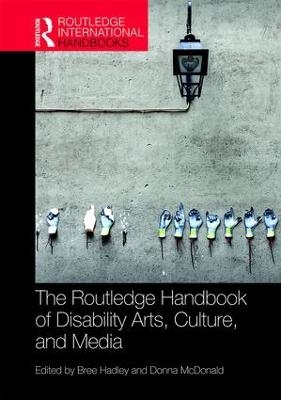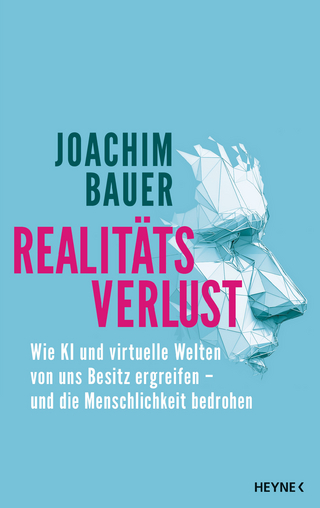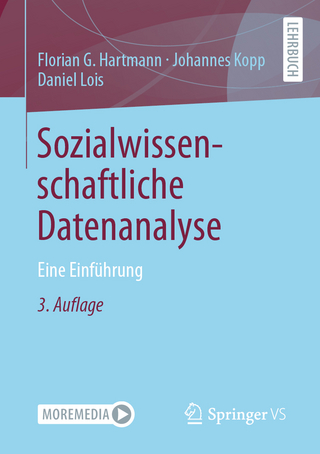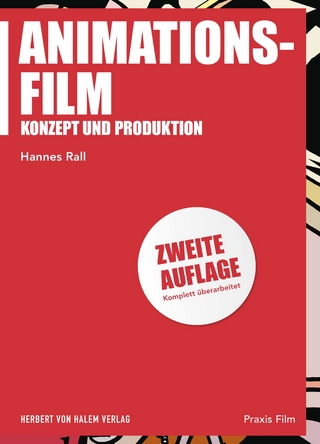
The Routledge Handbook of Disability Arts, Culture, and Media
Routledge (Verlag)
978-0-8153-6841-0 (ISBN)
In the last 30 years, a distinctive intersection between disability studies – including disability rights advocacy, disability rights activism, and disability law – and disability arts, culture, and media studies has developed. The two fields have worked in tandem to offer critique of representations of disability in dominant cultural systems, institutions, discourses, and architecture, and develop provocative new representations of what it means to be disabled.
Divided into 5 sections:
Disability, Identity, and Representation
Inclusion, Wellbeing, and Whole-of-life Experience
Access, Artistry, and Audiences
Practices, Politics and the Public Sphere
Activism, Adaptation, and Alternative Futures
this handbook brings disability arts, disability culture, and disability media studies – traditionally treated separately in publications in the field to date – together for the first time.
It provides scholars, graduate students, upper level undergraduate students, and others interested in the disability rights agenda with a broad-based, practical and accessible introduction to key debates in the field of disability art, culture, and media studies. An internationally recognised selection of authors from around the world come together to articulate the theories, issues, interests, and practices that have come to define the field. Most critically, this book includes commentaries that forecast the pressing present and future concerns for the field as scholars, advocates, activists, and artists work to make a more inclusive society a reality.
Bree Hadley is Associate Professor in Drama at Queensland University of Technology. Her research on representations of disability in contemporary, pop cultural, and public space performance, and spectators’ responses to these representations has appeared in Theatre, Social Media and Meaning Making (2017), Disability Public Space Performance and Spectatorship: Unconscious Performers (2014), and numerous performance and media studies journals. Donna McDonald is an Adjunct Senior Research Fellow with Griffith University, art therapist and artist. Her publications include two books, Jack’s Story (1991) and The Art of Being Deaf: a memoir (2014) and chapters in several books including Complicated Grief (2013), Deaf Epistemologies (2012), Literature and Sensation (2009), and A Revealed Life: Australian Writers and Their Journeys in Memoir (2007). McDonald regularly exhibits her paintings and mixed-media works in art shows.
List of figures; List of contributors; Acknowledgements; Chapter 1: Introduction: Disability Arts, Culture, and Media Studies: Mapping A Maturing Field (Bree Hadley and Donna McDonald); Part I: Disability, Identity, and Representation; Chapter 2: Great Reckonings in More Accessible Rooms: The Provocative Reimaginings of Disability Theatre (Kirsty Johnston); Chapter 3: Visual Narratives: Contemplating the Storied Images of Disability and Disablement (Donna McDonald); Chapter 4: Dis/ordered Assemblages of Disability in Museums (Janice Rieger and Megan Strickfaden); Chapter 5: The Down Syndrome Novel: A Microcosm for Inclusion or Parental Trauma Narrative (Sarah Kanake); Chapter 6: Paralympics, Para-sport Bodies, and Legacies of Media Representation (Laura Misener, Kerri Bodin, and Nancy Quinn); Part II: Inclusion, Well-being, and Whole-of-life Experience; Chapter 7: Beauty and the Beast: providing access to the theatre for children with autism (Andy Kempe); Chapter 8: Moving Beyond the Art-As-Service Paradigm: The Evolution of Arts and Disability in Singapore (Justin Lee, Shawn Goh, Sarah Meisch Lionetto, Joanne Tay, and Alice Fox); Chapter 9: Ten years of Touch Compass Dance Company’s Integrated Education Programme Under the Spotlight: A Reflective Essay (Sue Cheesman); Chapter 10: Inclusive Capital, Human Value and Cultural Access: A Case Study of Disability Access at Yosemite National Park (Simon Hayhoe); Chapter 11: Gender Representation, Power, and Identity in Mental Health and Art Therapy (Susan Hogan); Chapter 12: Demarcating Dementia on the Contemporary Stage (Morgan Batch); Part III: Access, Artistry, and Audiences; Chapter 13: Ways of Watching: Five Aesthetics of Learning Disability Theatre (Matthew Reason); Chapter 14: History, Performativity, and Dialectics: Critical Spectatorship in Learning Disabled Performance (Dave Calvert); Chapter 15: Institution, Care, and Emancipation in Contemporary Theatre Involving Actors with Intellectual Disabilities (Tony McCaffrey); Chapter 16: Sweet Gongs Vibrating: The Politics of Sensorial Access (Amanda Cachia); Chapter 17: Crip Aesthetics in the Work of Persimmon Blackbridge (Ann Millett-Gallant); Chapter 18: Exquisite Model: Riva Lehrer, Portraiture, and Risk (Ann M. Fox); Part IV: Practices, Politics, and the Public Sphere; Chapter 19: On the Fringe of the Fringe: Artmaking, Access, Rights, and Community (Brian Lobel and Jess Thom); Chapter 20: The Last Avant-Garde? (Sarah Austin, Kath Duncan, Gerard Goggin, Lachlan MacDowall, Veronica Pardo, Eddie Paterson, and collaborators); Chapter 21: Seeing Things Differently: Danielle’s Place Making (Jori De Coster); Chapter 22: ADAPT in Space! Science Fiction and Disability: Storying Interdependence (Petra Kuppers); Chapter 23: Environments, Ecologies, and Climates of Crises: Engaging Disability Arts and Cultures as Creative Wilderness (Bronwyn Preece); Part V: Activism, Adaptation, and Alternative Futures; Chapter 24: Changing Representations of Disability in Children’s Toys as Popular Culture (Katie Ellis ); Chapter 25: Economies of Scales (and Chords): Disability Studies and Adaptive Music (Alex Lubet); Chapter 26: Accidental Leaders: Inclusion, Career Pathways, and Autonomy among Dancers with Disabilities (Sarah Whatley); Chapter 27: Performing Disability: Representation and Power in ‘Classical’ Indian Dance (Akhila Vimal C.); Chapter 28: Disability Arts in an Age of Austerity (Bree Hadley); Chapter 29: Conclusion: Practicing Interdependency, Sharing Vulnerability, Celebrating Complexity: The Future Of Disability Arts, Culture, and Media Research (Bree Hadley, Donna McDonald, Sarah Austin, Kath Duncan, Gerard Goggin, Lachlan MacDowall, Veronica Pardo, Eddie Paterson, with collaborators Dave Calvert, Jori De Coster, Shawn Goh, Alice Fox, Ann M. Fox, Andy Kempe, Petra Kuppers, Justin Lee, Alex Lubet, Sarah Meisch Lionetto, Ann Millett-Gallant, Laura Misener, Bronwyn Preece, Megan Strickfaden, Joanne Tay, Matthew Reason, Nancy Quinn, and Sarah Whatley); Chapter 30: Plain Language Summary (Bree Hadley and Donna McDonald); Index
| Erscheinungsdatum | 18.12.2018 |
|---|---|
| Zusatzinfo | 3 Line drawings, black and white; 22 Halftones, black and white; 3 Illustrations, black and white |
| Verlagsort | New York |
| Sprache | englisch |
| Maße | 174 x 246 mm |
| Gewicht | 893 g |
| Themenwelt | Kunst / Musik / Theater |
| Sachbuch/Ratgeber ► Gesundheit / Leben / Psychologie | |
| Sozialwissenschaften ► Kommunikation / Medien ► Medienwissenschaft | |
| Sozialwissenschaften ► Soziologie | |
| ISBN-10 | 0-8153-6841-0 / 0815368410 |
| ISBN-13 | 978-0-8153-6841-0 / 9780815368410 |
| Zustand | Neuware |
| Haben Sie eine Frage zum Produkt? |
aus dem Bereich


